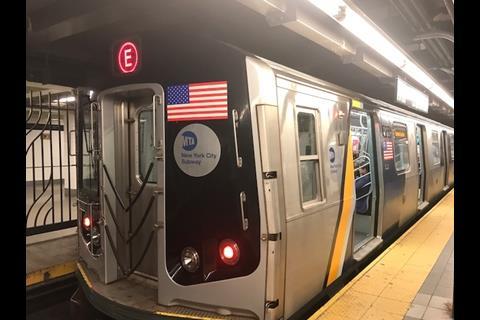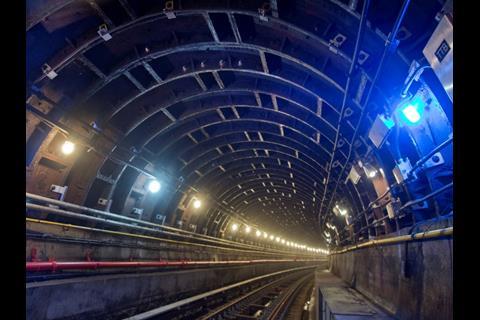USA: New York City Transit President Andy Byford has committed to significantly accelerate the renewal of the Subway and bus networks in the city under the Fast Forward programme unveiled on May 23.
Byford, who was appointed NYCT President in January having previously served as CEO of Toronto Transit Commission and a General Manager for three London Underground lines, outlined the urgent need to improve the reliability and capacity of the Subway network. Last July, New York state governor Andrew Cuomo declared a ‘state of emergency’ on the Subway, and ordered an action plan of short-term repairs worth around $700m.
The Fast Forward programme looks ahead in five and 10-year periods, and it sets out an ambitious aim to enhance services on a much shorter timescale than MTA had previously suggested.
‘When I took on this role, I did so knowing it would be the toughest transit job in the world’, Byford writes in his foreword to Fast Forward. ‘Decades of under-investment cannot be corrected overnight. As I said when my appointment was announced, what is needed isn’t mere tinkering, a few tweaks here and there. What must happen is sustained investment on a massive scale if we are to deliver New Yorkers the service they deserve and the transit system this city and state need.’
He identifies several immediate priorities, largely focused on the Subway but also covering buses and paratransit services. In the next five years, these are:
- introduction of ‘state of the art’ signalling on five of the busiest lines, including sections of the A, C, E, 4, 5, 6, F, M, R and G Subway routes;
- accessibility work at a further 50 stations to ensure Subway passengers are never more than two stops from a station with facilities for persons of reduced mobility;
- ‘state of good repair work’ at more than 150 stations;
- procurement of a further 650 subway cars;
- fitment of more than 1 200 cars with CBTC;
- redesign of the bus network in five boroughs;
- introduction of a new fare payment system;
- procurement of 2 800 buses.
In the following five years, work would focus on:
- resignalling sections of six lines covering the 1, 2, 3, B, D, F, M, A, C, N, R, Q and W routes;
- accessibility work at a further 130 stations with an aim to complete ‘the balance of all possible stations’ by 2034;
- 'state of good repair work' at another 150 stations;
- acquisition of another 3 000 Subway cars and 2 100 buses.
While the Fast Forward report makes clear that MTA has yet to attach a price tag to the investment programme, local media reports have suggested the 10-year plan could cost around $19bn. Much more use would be made of overnight and weekend engineering possessions to ensure Subway renewal work is carried out more quickly.
‘Now is the time to think big and transform our network so it works for all New Yorkers. NYCT must be completely modernised from top to bottom and not just in the area of infrastructure’, Byford added.
‘This plan requires buy-in and support from all stakeholders. Customer-facing changes — especially those requiring tough choices while improvements are made — need high-level stakeholder, advocacy group and public support to give us a clear, time-bound mandate to which we expect to be held accountable. I believe that New Yorkers want more than just a return to the reliability of yesteryear.’






